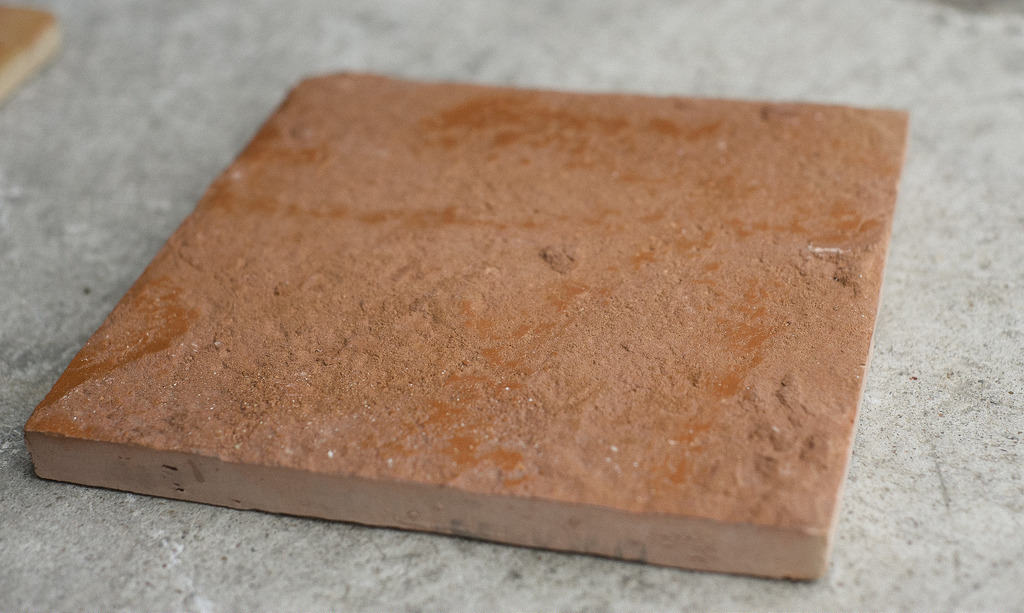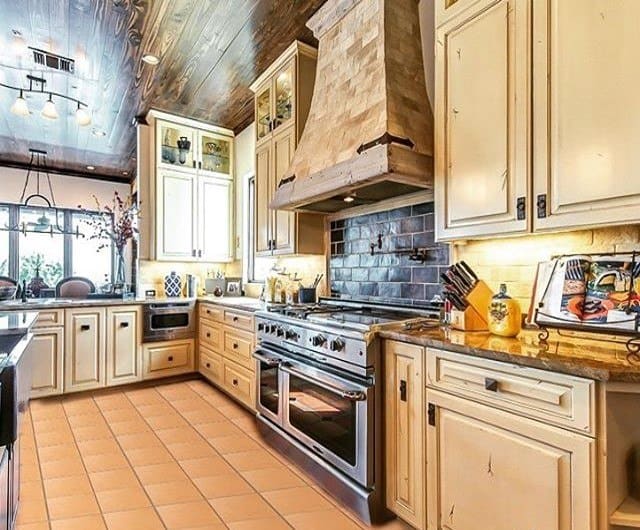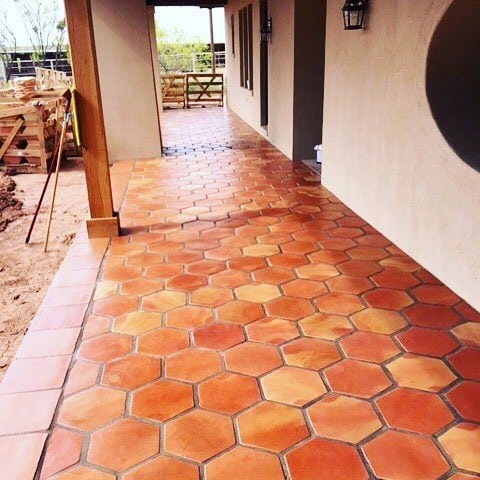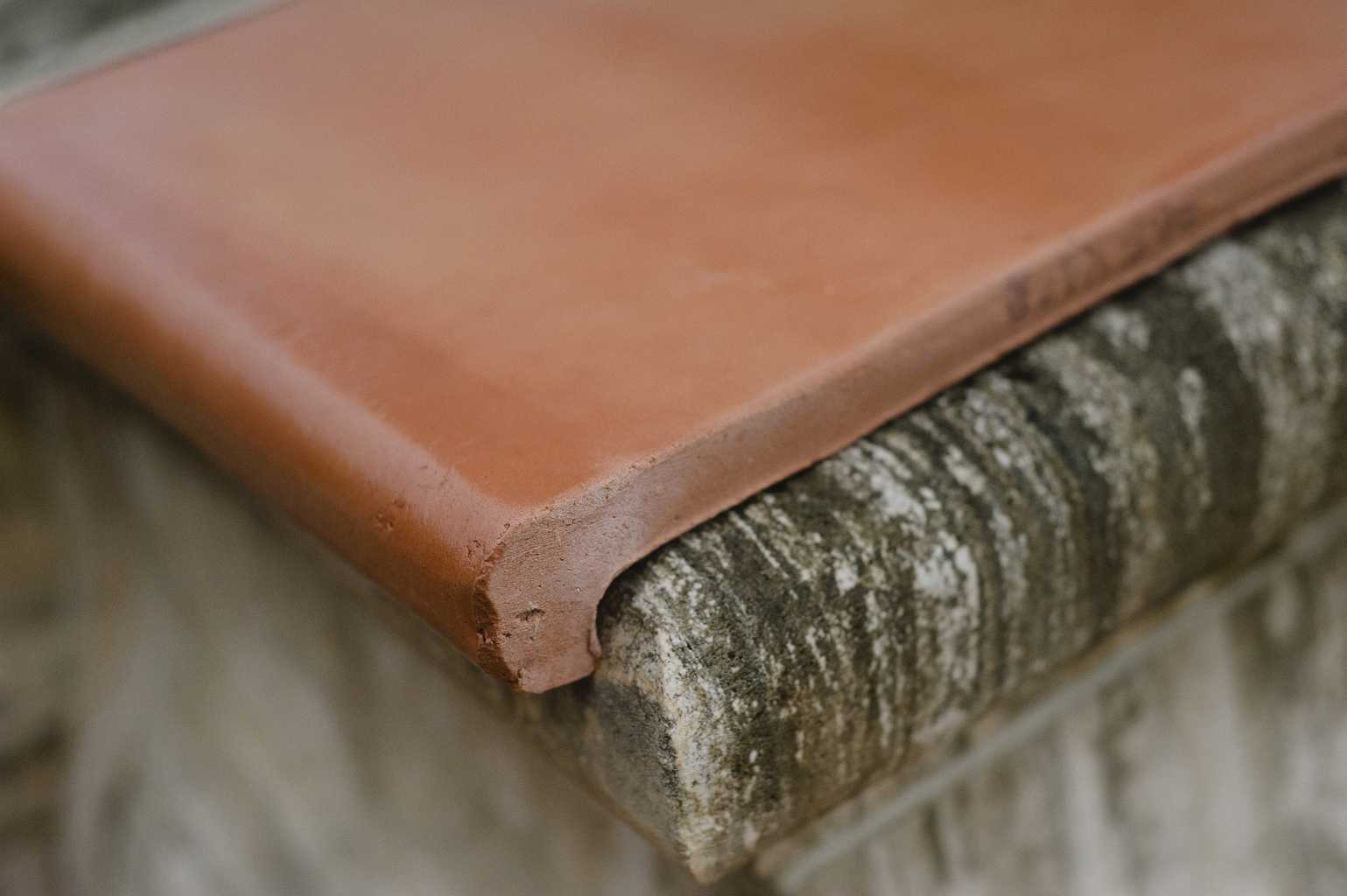Saltillo Mexican tile has been used in homes in Central and South America for hundreds of years. Though not durable enough to withstand harsh winters outside, these tiles are lovely indoors anywhere. The challenges of this type of flooring include installation of Saltillo tile, restoration of Saltillo tile, and maintaining Saltillo tile. But the benefits — rustic beauty, non-toxic materials used to manufacture, and low cost — may outweigh any drawbacks.
Bring the beauty and peace of Mexico to your home with Saltillo floor tiles. When paired with the right décor, Saltillo tile can have a bit of an exotic feel. It also makes for great solar mass for homes using passive solar energy!
Many choose Saltillo tile due to the:
- Natural beauty of the tiles themselves.
- The non-toxic materials used to manufacture the tiles.
- The low-cost of the tiles for the high end look.
Saltillo tile has its challenges, which include:
- The tiles themselves are extremely fragile.
- Maintaining and cleaning the tiles is tedious.

(Photo credit: Rustico Tile and Stone)
What is Saltillo Tile?
Saltillo tile is a type of terra-cotta tile made only in northern Mexico. These tiles are made of natural clay that is first shaped by hand and then dried in the sun. Saltillo tiles are then kiln fired to ensure hardness and durability. The tiles are carefully positioned in the kiln in order to create different colors. Depending on the tile position in the kiln, the resulting tiles can range in hue from pale amber to dark terra-cotta. Traditionally, Saltillo tiles are left unglazed, although some manufacturers sell them pre-treated or pre-sealed in order to increase their durability.
Naturally, Saltillo tile is not terribly strong or hard. Although it is comparable to other natural stone tiles (such as slate or granite) it can chip and crack. When used as exterior tiling, it can only be used in very mild climates, as harsh weather can damage the tile. Really, Saltillo tile should not even be used indoors in places that are particularly cold, as they will not be able to hold up in the face of colder temperatures. Saltillo tile typically has a MOH (measure of hardness rating) between a 3 and 4, which is fairly low (compare to porcelain, which has an average MOH of 7-9). Therefore, it is very rarely used for outdoor purposes these days, though it very warm climates, well maintained and sealed Saltillo tile makes for a nice tile flooring option for a patio. However, the elegance and beauty Saltillo Tile brings to the interior of the home more than makes up for its lack of strength and hardness.

(Photo credit: Rustico Tile and Stone)
Installing Saltillo Tiles
Installing Saltillo tile also has to be done carefully, as the tiles are delicate. Any grout or chemicals spilled on the tiles can damage them, so it is crucial to keep the tiles covered with paper until the installation is complete. This is not typically something that you will want to attempt yourself unless you have a good bit of experience with tile installation and feel confident with your abilities. However, because individual Saltillo tiles are so inexpensive, you can take a little liberty and losing one or two tiles during installation will not obliterate your flooring budget.
Prior to starting installation, you will need to make sure the subfloor is perfectly prepared. The flooring must be perfectly level and there are no cracks, holes or misalignments where moisture can get trapped. The tiles can be laid starting in one corner of the room or starting from the middle of the room, but the last row of tiles will need to be cut carefully to fit. Once the tiles have all been laid, a sealer will need to be applied, then a grout, and finally at least a second layer of the sealer.

Sealing Saltillo Tiles
Saltillo tile was introduced to Mexico by Spaniards hundreds of years ago, and the process of making the tile has remained the same since. The tile is actually named after the Mexican town of Saltillo, which produces the right clay and weather for making this popular tile.
As Saltillo tiles are fired at such low temperatures, they remain very porous and are therefore very susceptible to water damage. It is almost exclusively recommended these days that you seal Saltillo tiles to protect them from water, wear, and scratches. Typically, Saltillo tiles should be sealed after they have been installed and are completely dried and clear of extra dirt and debris. You will want to decide primarily how much shine you are wanting from your floors and choose a level of gloss or matte for the sealant and polish appropriately. Sealant should be applied in several coats, and the number of coats can vary depending on the manufacturer’s recommendation.
Maintaining Saltillo Tiles In the Home
Saltillo tile in the home has a few drawbacks. Regular sweeping is one of the best ways to maintain the Saltillo tiles in your home. While some recommend vacuuming, regular vacuuming could chip the tile, which is why sweeping is really the preferred method for daily maintenance. For a deeper cleaning, unsealed and untreated tile needs to be laboriously cleaned with diluted ammonia and “elbow grease”, and lots of rinsing. Saltillo tile floors need stripping and resealing, before and after cleaning to do a proper job. It is important to also wipe up any spills and dirt right away, as the tiles can stain. If the floor is ever flooded, the delicate tiles will be severely weakened. Only slightly damp mops can be used on the floors, and only the very mildest cleansers (no harsh chemicals). Also, a sealant will have to be reapplied regularly to keep the floor in good condition.

(Photo credit: Rustico Tile and Stone)
If you are planning to refinish Saltillo tiles, you will need to make sure any previous polish or sealant has been completely stripped and all that remains is the basic Saltillo tiles. To strip the tiles, you should use a gentle solvent and a soft bristle brush to prevent damage to the tiles themselves. Also, when refinishing, a new grout will have to be applied along with the new sealant.
Why Choose Saltillo Tile
Despite these disadvantages, there are many benefits to selecting Saltillo tile for your flooring needs. Primarily, Saltillo Mexican tile is beautiful and offers design flexibility. Whether you have a modern home, a country French-style residence, or love the Mediterranean style, the natural beauty of Saltillo tile can make your home truly stand out. Although this tile requires a little more effort to care for, many homeowners and decorators feel that it is well worth it for the beauty it brings to any room. Modern sealants do make cleaning and caring for Saltillo tile easier than ever before. The tile itself is comparatively inexpensive and many homeowners like the all-natural products that go into the tile-making process. At a time when we are surrounded by chemicals, it is nice to bring a natural product into the home.
The greatest benefit to Saltillo tile is that, because it is inexpensive, people feel free to experiment with various patterns and designs with the tiles and the results can be truly unique and spectacular. The tiles are readily available via almost all leading suppliers and, therefore, sourcing the product is not difficult at all. There are even blogs dedicated to various Saltillo designs where you can find inspiration and demonstrations of a whole selection of incredible designs. Perusing these visual examples can give you a clear idea as to how you want your flooring to look. If you need further or more specific advice, your Saltillo tile supplier will be able to recommend a few experts who can help you make your choices.

(Photo credit: Rustico Tile and Stone)
In general, natural tile flooring is a beautiful and durable flooring option for your home. If you’re looking for advice on specific tile flooring options, most popular professional companies, such as Lumber Liquidators, are happy to provide information regarding specific tile flooring options or installation and will even do in-home consultations at no charge. If you want a naturally beautiful and affordable flooring solution, consider installing Saltillo tile in your home. It has been trusted by savvy homeowners for hundreds of years. Is it time for you to trust too?

The grout on my Saltillo tile floor is about an inch thick. Probably due to the last water based sealant a milky substance has penetrated the grout. Elbow grease is not working. Any recommendations as to how I can get rid ot the milky substance? Thanks, David.
Flooring lady:
I’m upgrading a late 60’s traditional style / desert colored brick home. What is your opinion of how a (shades of) blue, glass mosaic wall tile (1×1) will work with Saltillo floor tile tile in a bathroom? Also how do you feel about a glass enclosure shower for this bathroom. I’m afraid of too much European style shower and glass wall tile with the Saltillo (??).
Thanks!
CFM
David,
Not knowing the type of grout used, I suggest you contact the manufacturer of the grout to inquire if you can use Stain Solver .
CFM,
I would suggest finding a style you want to emulate by searching Google Images or hire a professional in your area to consult with.
My wife and I are purchasing a home in south Florida that was built in 1994. I has Mexican tile (12″ squares) throughout the entire first floor. It looks dated and we are thinking about ripping it out and installing hardwood. But in second guessing ourselves, we are wondering if the Saltillo look will be coming back into style soon and we should save our money. What do you think?
Mark,
That would be a personal preference for you and your wife to make. You can use google to find fabulous sites on decorating.
What do you use to remove old sealer from super saltillo tile? Used Tile Lab Finishing Sealer.
Thanks!
I have a Saltillo tile porch (1,000 sq. ft.) around my entire house. It is about 10 years old and appears never to have been sealed. Please advise the brand name of a penetrating sealant product that you deem the best to use to seal my tile.
Thank you.
Saltillo tiles were installed over an expansion joint on our concrete patio and have cracked. Can you recommend a repair, such as a colored caulk, to disguise the cracks?
Hi Fred,
You can go through the comments here on this article and round up several names that I suggest.
I would also verify that no sealing was done as there is a process to strip the old sealant if it still exists.
I hear good things about Aqua Mix products, and they do have a high sheen product. Glaze’n Seal and Charlotte Mexican Paver Sealer also get high marks from Saltillo tile installers and manufacturers.
Again I recommend you look through the comments section for more information. Thanks!
Yes Kelly, you could try using a sanded caulk to help with the repairs. Keep in mindi t is a patch job and will look patched. If my tiles were cracked, and I couldn’t live with that look, I’d remove them. Then before putting them back down, fix the problem that caused the cracks before laying new tiles.
Hello,
My outdoor mexican pavers are extremely slippery. Is there something I can do to rough them up?
I don’t know if they are sealed or not.
Thanks,
Sussi
We have saltillo tile on our stairway which has black heel marks on it. It is sealed, but I can’t find anything to remove the black marks, suggestions, please.
Sussi,
Yes your pavers would become slick when wet. You could try a matte finish sealant to help reduce the slippery aspects of the wet tile. I recommend using AquaMixsealers, I’ve had great results with them.
Alicia,
You can use WD40 for cleaning black marks off your Saltillo tile: remember it is a solvent so be sure to wash it off after it’s done its magic or you could have the sealant dissolved too.
Dear Flooring Lady,
Please tell me what product will remove grease
spots from my unsealed saltillo tile.
Thank you so much
Thank you, I will try this.
Thank you kindly for your response!
Sussi
My kitchen floor is a pinkish stained (I think antique birch) Saltillo tile floor. My contractors have broken about 15 of the tiles. Do you know where I can find replacement tiles or can I restain the standard reddish Saltillo tiles to match?
Thanks for your help,
Heather
Maria,
Unsealed and untreated tile needs to be laboriously cleaned with diluted ammonia and “elbow grease”, and lots of rinsing. However, this may not be possilbe since the grease has already soaked into the tile. You may be better off at this point greasing the entire tile so that it’s uniformly stained.